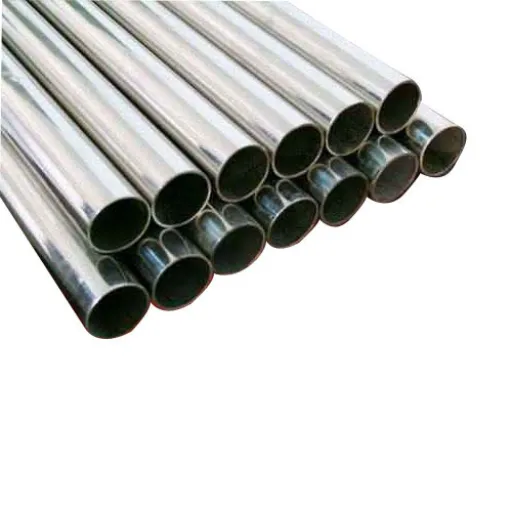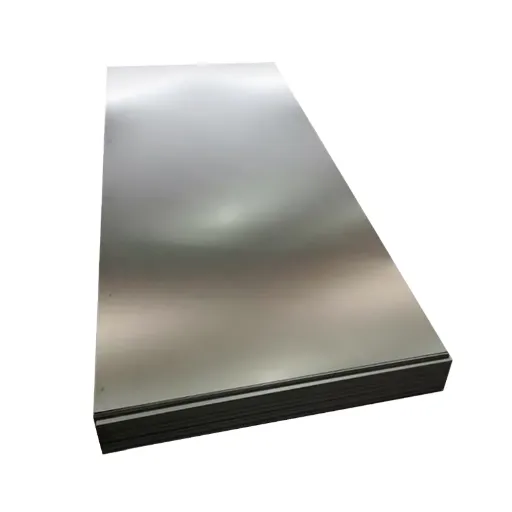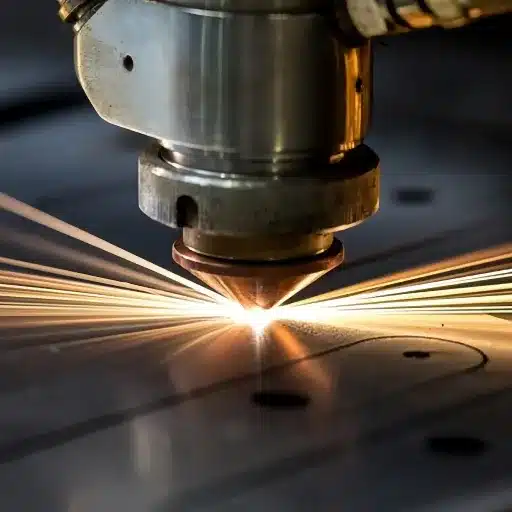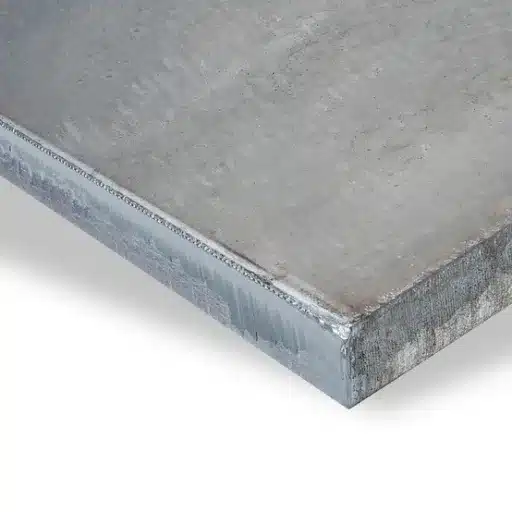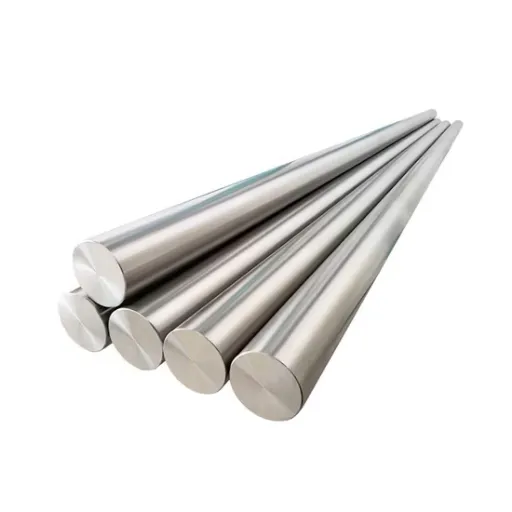When selecting the correct knife, customers typically overlook one of the most essential components – the steel. This is critical because the properties of steel vary radically and also determine the performance, longevity, and utility of the knife. People throw around terms such as “toughness”, “edge retention”, and corrosion resistance”, but what exactly do these terms mean and how do they affect the blade in practice? This page simplifies the selection of blade steel in the most understandable way, ensuring that whether you are in the kitchen, a knife enthusiast, or someone who enjoys the outdoors, you make the right choice. The article will help you understand why some steels are more efficiently used for specific purposes and why it’s essential to consider these aspects before making a knife purchase.
Key Properties of Knife Steel
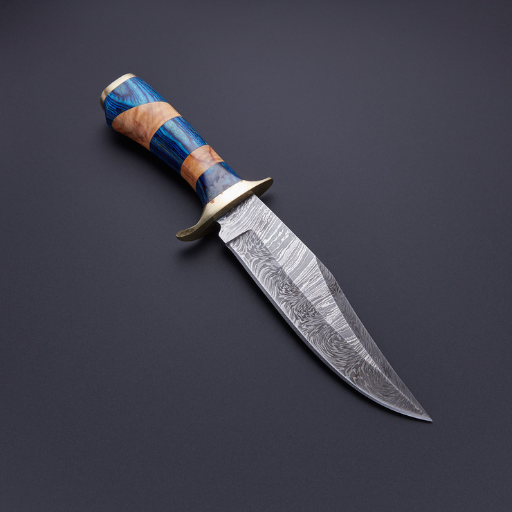
Hardness
Hardness is all about how much the knife steel can take before it starts deforming. This brings the steel’s hardness to be defined as the ability of the steel to retain its sharp edges for a longer time. Commonly, cutting tools requiring sharp edges are made from such hardened steels. However, as the hardness of toughness tends towards an extreme hard temperament, the blade may become too brittle, hence susceptible to unusual activities.
Toughness
Toughness is a term used to describe the resistance of knife steel to breaking under compressive force or impact. A rigid blade is less susceptible to cracks and chips when used in chopping or prying activities, thereby improving the usability of any knife to do such tasks, especially in outdoor or complex conditions.
Corrosion Resistance
Corrosion resistance is the ability of a steel to resist rusting or staining after coming in contact with water or acidic substances. Stainless steels exhibit excellent resistance to corrosion, a property that makes them suitable for use in both the kitchen and outdoors.
Edge Retention
Edge retention refers to the capability of the knife’s edge to remain sharp while still being used. Edges with higher retention capacity avoid constant sharpening, which is an advantage when performing long or strenuous activities.
Ease of Sharpening
Metal alloying in a knife steel is closely related to how easily it sharpens. Harder steels, on the other hand, sustain their edge for a greater duration, but they are also relatively difficult to sharpen than the softer ones.
Understanding how these elements interact is crucial in determining the most suitable steel. These properties are usually pivotal in ensuring good performance for the majority of users.
Edge Retention Explained
In knife steel, the property known as edge retention determines how long a steel will remain sharp in prolonged applications. This will depend on numerous aspects such as, the steel material itself, heat treating, and even the purpose for which the knife is to be used.
On the other hand, engineered steels such as CPM-S110V, M390, or ZDP-189 exhibit excellent edge retention due to the incorporation of hard and strong carbides, including vanadium and chromium carbides, among others. For example, CPM-S110V contains nearly 9% vanadium carbide and therefore exhibits exceptionally high wear resistance for a lightweight material. On the other hand, older steels such as 440C or AUS-8 may be sharpened more easily but tend to become dull much faster in similar conditions.
The development of edge retention tests is constantly progressing, and currently, many knife manufacturers apply cutting methods, such as CATRA (Cutlery & Allied Trades Research Association) tests, to the blades conducted under specified conditions. For instance, one could present an argument that suggests that very high-end super steels can remain sharp enough to make 200-300 cuts on standard testing blade tissue, but less advanced steels will only be able to make 50-100 cuts.
Deliberation on the conception includes controlled temperatures, the presence or absence of moisture, and the specific working conditions in question, including the type of work to be done. For example, cutting materials such as meat and vegetables is less damaging to the blade of any given knife compared to cutting more abrasive materials such as cardboard or ropes. These considerations, in light of the availability of high-tech steel grades, enable consumers to select the most suitable knife steel based on the intended use and maintenance requirements.
Toughness in Knife Steel
Toughness in steel refers to the ability of the material not to chip, crack, or break under applied stress, particularly during impact or side forces. This property is essential in areas where knives require extreme performance, such as for wood cutting or levering objects. The relationship between toughness and hardness is inversely proportional—it means that the more the hardness (which is done in a bid to increase the rigidity of the sharpening edge), the less toughness that can be achieved in a particular knife steel, hence the need to apply the appropriate amount of both.
According to cutting-edge steel test results, certain steels, such as CPM-3V, CPM-M4, and AEB-L, are the strongest and, therefore, the most preferred in the market. For illustration purposes, there is an excellent number of application-specific steels on the market at present. Still, CPM-3V features a high Charpy impact toughness, making it suitable for the heaviest work. Concerning high-carbon steels, such as 1095, they tend to exhibit some toughness; however, they are less resilient than super steels when subjected to extremely harsh conditions.
Increased usage becomes more common in inhomogeneous materials or sections, knife edges, and knife steel for the following reasons. For example, a thinner edge, even made of a very tough metal, is more susceptible to chipping than a thicker or convex edge. Today, due to new steel compositions, such as when steel is created via powder metallurgy, the manufacturers are able to achieve the best hardness and toughness out of the material possible or at least better than was possible with any traditional steel out there.
Other than that, it is quite imperative to know about the toughness of materials, to efficiently handle various knives under punishing duty, without breaking or ruining them, even after subjecting them to unfavourable conditions. Such development encourages the production of metals aimed at specific groups, including both professional and amateur steel users, as companies continually enhance their alloys.
Corrosion Resistance Characteristics
The ability to avoid or withstand corrosion without degradation is an essential characteristic in steel, particularly when an application is in the most extreme ocean and acidic environments. The enhanced resistance of stainless steels to corrosion is attributed to the presence of chromium in these materials, which can vary between 10.5% and 30%. Consequently, chromium combines with oxygen, resulting in a corrosion-inhibiting effect as it generates a stable oxide on the steel surface.
An example of this is 304 grade knife steel, which contains 18% chromium and 8% nickel, and thus does not rust and can withstand weak acids as well. As for 316 grade stainless steel, it includes an additional 2-3 percent of molybdenum. In turn, it makes it more resistant to corrosive attack in the presence of chloride under both marine or processing chemicals conditions.
Many of the contemporary steels also incorporate advanced coatings and “treatments” like PVD (Physical Vapor Deposition) or electropolishing to forestall corrosion. Recent research shows that nitrogen-hardened stainless steels, including duplex grades, have superior mechanical and corrosion properties, because they extend the operational conditions of the steel even further.
New metallurgical processes enable the manufacturers, however, to continue to develop corrosion-resistant steels which are easily maintainable even in industries like aviation, health care, construction, knife steel or even energy consumption.
Types of Knife Steel
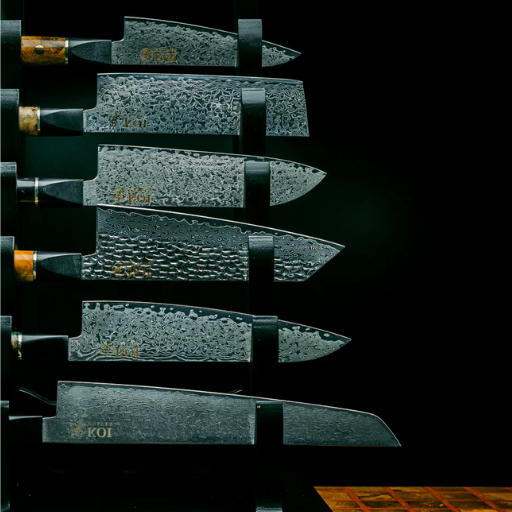
| Steel Type | Key Features | Edge Retention | Toughness | Corrosion Resistance | Ease of Sharpening |
|---|---|---|---|---|---|
| Carbon Steel | High sharpness, low corrosion | Moderate | High | Low | Easy |
| Tool Steel | High hardness, wear resistance | High | Moderate | Moderate | Moderate |
| Stainless Steel | Corrosion-resistant, minimal care | Moderate | Moderate | High | Moderate |
| CPM S30V | Premium, balanced properties | High | Moderate | High | Moderate |
| D2 Steel | Semi-stainless, great edge retention | High | Moderate | Moderate | Moderate |
| VG-10 | Popular for kitchen knives | High | Moderate | High | Easy |
| 440C | Versatile, corrosion-resistant | Moderate | Moderate | High | Easy |
| 14C28N | Excellent edge stability | High | High | High | Easy |
| CPM MagnaCut | Balanced toughness and retention | High | High | High | Moderate |
| AUS-8 | Affordable, easy to sharpen | Moderate | Moderate | Moderate | Easy |
| 1095 | High sharpness, low corrosion | Moderate | High | Low | Easy |
High Carbon Steel
A more favorable option compared to other materials, high-carbon steel is a good candidate for making knives or blades due to its properties that enhance the hardness and toughness of the material. In particular, this category of steel has a higher carbon concentration, ranging from 0.6% to 1.5%. Applying heat to this kind of steel makes it hard and resistant to wear, and also helps to keep the edge sharp. Hence, high-carbon steels are primarily used in making blades that must maintain sharpness for a longer time.
A more recent research on the subject has indicated that knife steel, containing high carbon content such as 1095, 5160, as well as AISI W1, is a standard metal used to create knives. An illustration of this is the 1095 steel, which is considered reasonably tough (with a Rockwell Hardness of 55–66 HRC) and sufficiently economical. Additionally, it is possible to easily restore its edge gears, which is particularly important for everyday use. Yet, it is widely understood that high-carbon steels are more susceptible to rust and/or corrosion than stainless steels and therefore require proper care.
Contemporary techniques, such as the inclusion of elements like chromium, vanadium, or manganese into carbon steel, enable improvements in certain properties, including increased toughness and resistance to oxidation. Take, for example, 5160 steel, which contains chromium in its composition. This steel is more tolerant of wear and tear and is more flexible, making it suitable for cases where swords, knives, and machetes of larger sizes are made.
High-carbon steel knives are very sharp and maintain an excellent cutting performance, but the many advantages they offer come with implications that should be managed carefully, and even more so if humid conditions are expected or a high corrosion-resistant ability is needed. Proper maintenance and lubrication, coupled with the development of technology, mean that knife steel still is the most preferred option for high-quality and performance blades in today’s world.
Stainless Steel
It’s a well-known fact that the metalworking industry embraces composite materials that do not corrode or stain easily; thus, there is extensive use of stainless steel alloys in the manufacture of products such as cutlery, kitchen equipment, and medical devices. Razor-sharp knife steel alloys are always in demand since they contain over 10.5% chromium in various steel compositions, including steel that has been reforged into blades for multiple uses, for example. Remember, this is the layer that helps the metal to stay free from rust or any other damage. In fact, even if scratched, those coatings “heal” themselves over time, thus allowing the metal to withstand adverse conditions well.
Stainless steel is classified into four prominent families: austenitic, ferritic, martensitic, and precipitation-hardening. Despite all that, austenitic stainless steel accounts for almost 70 percent of global production and is particularly renowned for its exceptional corrosion resistance and high-temperature strength. Grade 304 stainless steel is suitable for a wide range of uses, while 316 stainless steel, which contains molybdenum, is the preferred grade when dealing with corrosive chemicals and seawater, making it a suitable choice for heat-resistant knife steel.
According to recent statistics, the global manufacturing of stainless steel is forecasted to reach $ 170 billion by 2028, representing a nearly 6% increase between 2021 and 2028. The need for stainless steel stems from the emergence of new applications for this material in the renewable energy field, construction, and the automotive industry. Stainless steel is also environmentally friendly, as most of it can be recycled up to 88 percent, resulting in minimal environmental damage.
As long as it is properly used and maintained, stainless steel remains a strong, efficient, and eco-friendly material option where strength and efficiency are required. These achievements enable knife steel to remain the number one rival of any industrial material currently in existence.
Damascus Steel
Wavy designs further enhance the knife steel, adding an extra layer of appeal to the Damascus pattern steel. It has its roots in the Middle East, and over the years, it was revered for its self-explanatory crispiness and good flexibility, which made it suitable for the making of both blades and cutting instruments. The characteristic “wavy” shape of Damascus knives is formed by understanding, aligning and repeatedly heating steel and iron, which have different levels of carbon content.
The advancement in the field has helped scientists add new features to past Damascus blades, including those that recover and even improve harmful properties, such as the brittleness of steel used in this field, with current technologies. It turns out that many of those who would claim proficiency in growing real Damascus Steel incorporated fine details of carbon nanotubes and carbide nanowires within the microstructure of the solid mass.
Damascus knife steel is used today for more than just sheer functionality; it is also employed in the creation of luxury knives and other customized products. For instance, due to the skillful design and great functionality, Damascus knife steel kitchen knives are the talk of the town with some costing over 1000$. Damascus knife steel represents an art and a history some would call science, which is why the material now enjoys the status of being synonymous with quality and complex metalwork systems.
Comparing Steel Types
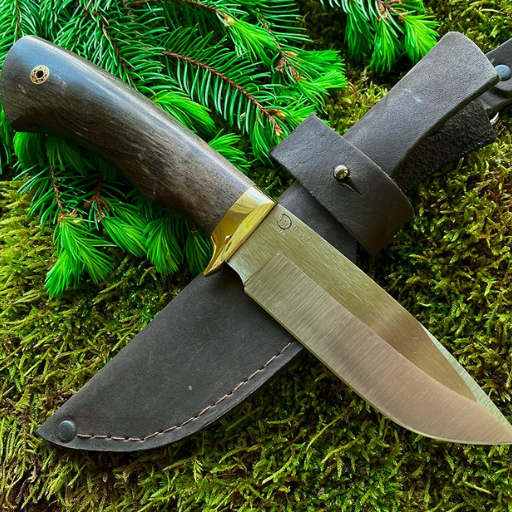
| Steel Type | Key Features | Edge Retention | Toughness | Corrosion Resistance | Ease of Sharpening | Best Use |
|---|---|---|---|---|---|---|
| Carbon Steel | Sharp, low corrosion resistance | Moderate | High | Low | Easy | Outdoor, bushcraft knives |
| Tool Steel | Hard, wear-resistant, semi-stainless | High | Moderate | Moderate | Moderate | Heavy-duty, outdoor knives |
| Stainless Steel | Corrosion-resistant, durable | Moderate | Moderate | High | Moderate | Kitchen, EDC, diving knives |
| CPM S30V | Premium, balanced properties | High | Moderate | High | Moderate | Premium EDC, kitchen knives |
| D2 Steel | Semi-stainless, great edge retention | High | Moderate | Moderate | Moderate | Bushcraft, survival knives |
| VG-10 | High sharpness, corrosion-resistant | High | Moderate | High | Easy | Kitchen, folding knives |
| 440C | Versatile, corrosion-resistant | Moderate | Moderate | High | Easy | EDC, general-purpose knives |
| 14C28N | Excellent edge stability | High | High | High | Easy | Outdoor, bushcraft knives |
| CPM MagnaCut | Balanced toughness and retention | High | High | High | Moderate | All-purpose, premium knives |
| AUS-8 | Affordable, easy to sharpen | Moderate | Moderate | Moderate | Easy | Budget EDC, general knives |
| 1095 | Sharp, low corrosion resistance | Moderate | High | Low | Easy | Survival, outdoor knives |
Performance of Different Steel Grades
The characteristics of performance for different grades of steel vary a lot based on the purpose for which the knife steel is manufactured and used. Hereinafter, we distinguish five common grades of steel and describe the respective characteristics:
- Carbon Steel Grades (e.g. 1045 or A36)
This type of steel is advantageous in terms of cost and strength-to-weight ratio. Primarily used in the structure of a building or the making of a tool, this is due to its strong and enduring nature. Nonetheless, it is inclined to corrode and requires protection in the form of paint or coating.
- Stainless Steel Grades (e.g., 304 or 316)
The corrosion-proof ability of stainless steel prevents it from binding energy when it is not in powerful application which s steel of cooking, medical, and sea equipment. Grade 316 offers more resistance to seawater’s aggressive attack than Grade 304, but it is also more expensive.
- Steel Types (e.g., D2 or H13)
Tool steel grade categories are optimized for hardness and major wear resistance; therefore, they are commonly used in cutting tools, molds, and dies. D2 steel is a good example for holding edges in place for a long time, whereas H13 is known for its performance in high temperatures.
- High-Speed Steel (e.g., M2 or T1)
High-speed steel is a type of steel grade that makes it extremely hard and resistant to wear, even at high temperatures, as it can retain its sharpness for an extended period. M2 steel grade is commonly used in drills and milling cutters, while T1 is superior due to its higher wear resistance.
- Alloy steel (e.g., 4140 or 4340)
Different compounds like chromium, molybdenum or nickel are added to alloy steel to improve specific characteristics such as strength, hardness or corrosion resistance. The material of the particular part is another factor, though, because materials such as the 4140 grade are used in various industries, including automotive and travel, due to their high strength and high cycles before fatigue failure.
Users can better appreciate the various attributes of the knife steel they have. They should also consider the material’s quantity and quality when optimizing its productivity and lifespan for a particular use.
Best Steel for Different Types of Knives
When selecting the best type of knife-making steel for blades, it is essential to consider that different uses dictate the choice of steel type. Here is a summary of some of the commonly used knife steel types for different applications along with their principal characteristics and recently discovered performance-based comments on each of them:
Chef’s Knives
High-carbon stainless steels, which are preferred for chef’s knives due to their sharper and longer-lasting edges, are typically used. For example, steels such as VG-10 and ATS-34 have been very popular because they possess a razor edge for an extended period and are also resistant to rust. Take VG-10, for example, it remains in the hardness range of approximately 58-61 HRC and provides excellent edge retention, which is highly needed in food preparation duties.
Outdoor and Survival Knives
Survival and hunting knives emphasize hardness, particularly in edge retention, even under increased pressure. A few steels, for example, 1095 and CPM-3V, are bestsellers. The 1095 knife steel has about 0.95% of carbon, and, to many people, it does not take long to hone in the bush, though the steel is prone to rust. CPM-3V, on the other hand, has lots of toughness and wear on it, but it is able to provide certain levels of corrosion resistance, something significant when used outdoors for long.
Pocketknives
Everyday use made some general-purpose steels, such as those in EDC, trickier when it came to their hardenability, edge retention, and corrosion resistance. S30V and D2 are very popular for this purpose. Crucible developed S30V and is widely used due to its high hardness (approximately 60 HRC) and excellent resistance to blunting edges. In contrast, D2 steel, which falls below the stainless steel category in chromium content, exhibits a semi-rust state and high abrasion resistance, making it suitable for multitasking as an EDC.
Cutting tools for the kill
Essential traits for hunting knives encompass sturdiness and the capability to stay sharp when slicing meat or de-skinning animals. Examples of such steel include the widely known 440C and AUS-8 steel. Followed by 440C steel, which is stainless steel with high chromium content, and does not rust easily, and maintains its sharpness for a long time. On the other hand, Japanese AUS8, which is categorized as stainless steel, combines wear resistance and toughness at the expense of being more demanding on sharpening.
Economically priced Kitchen Knives
Such economically priced kitchen knives utilize knife steel ranging from 420HC to X50CrMoV15. These are corrosion-proof precursors that require no special care, just sharpening; therefore, they are almost perfect for non-chef knives. Many knives from Germany utilize X50CrMoV15, an alloy that incorporates chromium, molybdenum, and vanadium to enhance toughness and edge retention, in addition to its other properties.
Customized Blades
For specific purposes, such as filleting a fish or precise whittling, a softer knife steel that can still withstand rust well, like Sandvik 12C27, may be beneficial. Made in Sweden, it offers a very high quality and balance of toughness and ease of centration for maximum durability, precision of the edge grind and wearing of the blade – all in one.
Reference Data
- Hardness Comparison:
- VG-10: 58-61 HRC
- S30V: ~60 HRC
- CPM-3V: 58-60 HRC
- 440C: 58 HRC
- Corrosion Resistance Ratings (Scale of 1-5, 5 being highest):
- 440C:** 4-5 (Excellent)
- AUS-8:** 4 (Good)
- 1095:** 2 (Low – requires maintenance)
By understanding each steel’s unique characteristics, users can make informed decisions tailored to their specific knife requirements. This ensures the knife’s performance aligns perfectly with its intended purpose, whether for professional kitchen work, outdoor adventure, or daily utility.
Price vs. Quality in Knife Steel
| Steel Type | Price Range | Edge Retention | Toughness | Corrosion Resistance | Ease of Sharpening | Best Use |
|---|---|---|---|---|---|---|
| 420 | Low | Low | Moderate | High | Easy | Budget knives, general use |
| 440C | Low to Moderate | Moderate | Moderate | High | Easy | EDC, general-purpose knives |
| AUS-8 | Low to Moderate | Moderate | Moderate | Moderate | Easy | Budget EDC, general knives |
| 14C28N | Moderate | High | High | High | Easy | Outdoor, bushcraft knives |
| VG-10 | Moderate | High | Moderate | High | Easy | Kitchen, folding knives |
| D2 Steel | Moderate | High | Moderate | Moderate | Moderate | Bushcraft, survival knives |
| CPM S30V | High | High | Moderate | High | Moderate | Premium EDC, kitchen knives |
| CPM MagnaCut | High | High | High | High | Moderate | All-purpose, premium knives |
| M390 | Very High | Very High | Moderate | High | Difficult | High-end EDC, premium knives |
| 1095 | Low | Moderate | High | Low | Easy | Survival, outdoor knives |
| Carbon Steel | Low to Moderate | Moderate | High | Low | Easy | Outdoor, bushcraft knives |
Choosing the Best Steel for Your Needs
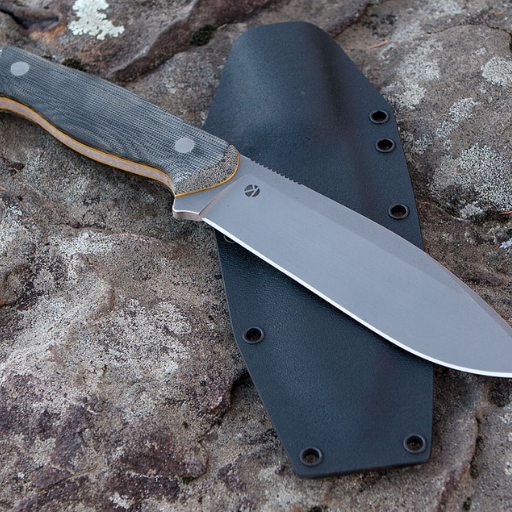
When selecting the best steel for your knife, consider your specific needs and how you intend to use it. For outdoor or heavy-duty tasks, a durable steel like 440C is ideal due to its excellent wear resistance and rust protection. For general-purpose use, AUS-8 provides a good balance of sharpness, corrosion resistance, and ease of sharpening. If you prioritize sharpness and are willing to accept regular maintenance, 1095 steel is a budget-friendly option. Match the steel type to the frequency and type of use to ensure optimal performance.
Factors to Consider When Selecting Knife Steel
Selecting a knife steel largely depends on several considerations, which vary depending on the specific application and the individual’s preferences. Here are five essential considerations;
Hardness
The ability of steel to withstand stresses without changing shape is assessed in terms of its hardness, measured on the Rockwell Hardness Scale (HRC). The harder the steel, the longer the edge will be retained; however, brittleness may be an issue with harder steels. Such is the case with high-end steels like S90V, which, with their high HRC, are mainly used for cutting purposes.
Toughness
This refers to the steel’s ability to absorb shock without chipping or breaking. This is one of the most critical factors when it comes to knives used in heavy or outdoor activities. Often, the user exercises acts of toughness in steels like 5160 and A2 steels.
Corrosion Resistance
Corrosion resistance is necessary to prevent rust and stains on the blades in humid or wet weather. VG-10 and CPM-S30V stainless steels are particularly good for this and therefore a preference for knives used outdoors, as well as the kitchen.
Edge Retention
Resistance to edge deformation means the blade will retain its sharpness even after prolonged use. The ability of carbon steels, such as 3V, to maintain a sharp edge after prolonged use is one of the reasons they are favored for making durable knives.
Ease of Sharpening
The problems with some steels retaining their edges for a long time may be that they are difficult to sharpen. Steels like 1095 or AUS-8 have less hard features after hardening and this comes in handy among users, especially those who have no sophisticated sharpeners.
Suppose these aspects are evaluated from an integrative perspective. In that case, you will be able to determine the appropriate knife steel for the desired task and select a knife that is both functional and well-maintained for a longer period.
Recommendations Based on Usage
For demanding tasks such as cutting and prying, it is advisable to choose a tool steel with a high carbon content, such as CPM-3V or D2, due to its exceptional levels of toughness and edge retention. In between these two extremes lies the medium, which comes in the form of stainless steel. VG-10 and 154CM typify those steels due to their ability to retain an edge for longer without sacrificing corrosion resistance to any significant degree. In instances where less effort in maintenance is anticipated, the softer stainless steels, such as 420HC and AUS-8, are good options because they are relatively easier to maintain, as well as being rust-resistant. The most suitable type of knife steel, in any case, depends on the knife’s purpose and intended usage.
Expert Tips for Making the Right Choice
- Understand the Requirements
First, determine how the knife will be applied. For activities like camping and hunting, you should pay more attention to the strength and durability of the knife. On the contrary, for the kitchen activity or every day carrying a knife, the more appropriate option would be lightweight and anti-corrosion options.
- Analyse the Steel Development
Get acquainted with some basic properties of steel, such as hardness, edge retention ability, rust resistance, and deformation stability. D2, for example, has excellent resistance to deformation. VG-10, on the other hand, is very stainless and easy to clean.
- Lay Down the Financial Constraints
Generally, knives are priced according to the steel used. Knife steel or M390, for instance, costs more than the average due to its excellent edge holding properties and its corrosion resistance. Therefore, setting a financial target or budget would assist on limiting the available alternatives.
- Choosing the Suitable Style of Blade
The shape and size of the blade are also key to determining performance. A drop point blade made of high-carbon steel may serve for heavier outdoor chores better, while cooking or intricate tasks will do with a more flexible stainless steel blade.
- Comfort and Fit
Steel is not just the knife steel; it is how the knife integrates with the handle and the hand, and how they interact. Check the handle’s design, for ergonomics in particular, and look at how heavy and how balanced the tool is and whether this is acceptable for long hours of use. It may not be possible, but try the knife out first if the opportunity arises.
Considering these aspects, it is possible to make a selection of the knife that will be perfect for sure.
Maintenance and Care for Knife Steel

Keeping your tools in good shape requires proper care, such as maintaining the knife steel. care for your tools adequately by:
- Clean Regularly
Using warm water and soap, hand-wash the knives immediately after they become dirty. Keep the knife out of the dishwasher as this is not good for the edges as well as the handles of the knife.
- Dry Thoroughly
After washing the knife, allow it to air dry, as towels can pick up moisture and accentuate any rusty finish on the knife.
- Sharpen the Knife from Time to Time
To keep the knife sharp use the stone or a knife sharpener. It is always risky to have a blunt knife sharpener, so it is a habit to keep such a tool in a sharp condition for a long time.
- Store Knives Properly
Keep knives in a safe place such as a knife block, magnetic strip or sheath to keep the edge safe and avoid injury.
Observing these recommendations will help keep the knife functional, sturdy, and harmless for any user.
Sharpening Techniques for Different Steel Types
| Steel Type | Sharpening Tool | Angle Recommendation | Grit Level | Key Tips |
|---|---|---|---|---|
| Carbon Steel | Whetstone or diamond stone | 20-25 degrees | Medium to fine | Oil blade to prevent rust |
| Tool Steel | Diamond or ceramic stone | 20-25 degrees | Medium to fine | Use steady pressure |
| Stainless Steel | Ceramic or whetstone | 15-20 degrees | Fine to ultra-fine | Avoid overheating during grinding |
| CPM S30V | Diamond stone | 15-20 degrees | Fine to ultra-fine | Use light, consistent strokes |
| D2 Steel | Diamond or ceramic stone | 20-25 degrees | Medium to fine | Maintain consistent angle |
| VG-10 | Whetstone or ceramic rod | 15-20 degrees | Fine to ultra-fine | Polish for razor sharpness |
| 440C | Whetstone or ceramic rod | 20-25 degrees | Medium to fine | Regular maintenance recommended |
| 14C28N | Whetstone or diamond stone | 15-20 degrees | Fine to ultra-fine | Polish for edge stability |
| CPM MagnaCut | Diamond or ceramic stone | 15-20 degrees | Fine to ultra-fine | Use slow, precise strokes |
| AUS-8 | Whetstone or ceramic rod | 20-25 degrees | Medium to fine | Easy to sharpen, maintain angle |
| 1095 | Whetstone or diamond stone | 20-25 degrees | Medium to fine | Oil blade after sharpening |
Cleaning and Storage Best Practices
People should always take care of their knives so that they work optimally. Find five dos in order to achieve this below:
- Wash Knives By Hand Immediately
One should use warm, soapy water and a soft cloth to clean the knives, one at a time. Do not put the knives inside the dishwasher at all, as it can damage both the blade and the handle due to the heat and detergents.
- Do Not Store Knives After Drying As They Are
It is essential to wipe the knife after washing efficiently with a dry cloth to avoid any water remaining as it may cause rust or corrosion.
- Make Use of a Cutting Board
Refrain from making cuts on hard materials like glass or stone since they dull the knife steel quickly. It is best to use a board either made from wood or good-quality plastic.
- Spray With a Protective Coat
For this reason, mineral oil, which is safe for consumption, should be applied quite often over carbon knife steel.
- Do Not Store Knives Encumbered In A Drawer with Other Objects
If a blade is not properly stored, it can damage the edge or risk causing injury. It is therefore recommended that knives be safely stored in a knife block, on a magnetic strip, or with individual edge guards.
Understanding the Longevity of Knife Steel
How long knife steel lasts is dependent on a number of factors like type of steel, how often it is used, maintained, sharpened etc. usually high-carbon and stainless steels have the longest lifespan if regularly attended to.
References
- Selection and Care of Knives
- Source: Virginia Tech Extension
- URL: Selection and Care of Knives
- Description: Discusses the merits and limitations of knives made from different types of steel, including carbon and stainless steel.
- Friction Stir Processing of D2 Tool Steel for Enhanced Blade Performance
- Source: Brigham Young University
- URL: Friction Stir Processing of D2 Tool Steel
- Description: Explores the processing of D2 tool steel to improve blade performance, providing insights into steel grain properties and manufacturing techniques.
- An Abrasive Wear Model of Knife Milling
- Source: U.S. Department of Energy (OSTI)
- URL: Abrasive Wear Model of Knife Milling
- Description: Examines the impact of material properties and milling parameters on knife edge recession, focusing on M2 tool steel and carbon steel.
Frequently Asked Questions (FAQ)
What is the importance of knife steel performance?
Knife steel performance is crucial as it determines how well a knife will function in various tasks. Factors such as hardness, toughness, and edge retention are vital for ensuring that the knife can handle daily use without losing its sharp edge. High-performance knife steels often have a balance of these properties, making them suitable for both kitchen knives and outdoor tools.
What are the key properties of knife steel?
The key properties of knife steel include hardness, toughness, wear resistance, and corrosion resistance. Hardness determines how well a knife holds an edge, while toughness indicates its ability to resist chipping or breaking. Wear resistance helps the blade maintain its sharp edge over time, and corrosion resistance prevents rust, particularly in stainless steel variants.
How does heat treatment affect knife steel?
Heat treatment is a critical process that enhances the properties of knife steel. It involves heating the steel to a specific temperature and then cooling it rapidly, which can significantly increase hardness and toughness. Proper heat treatment can improve edge retention and overall knife performance, making it essential for knife makers to master this technique.
What is Damascus steel and its advantages?
Damascus steel is a type of steel renowned for its distinctive patterns and exceptional performance. It combines different steel types to create a blade that offers excellent toughness and edge retention. The layering process not only enhances the aesthetic appeal but also contributes to the blade’s strength and flexibility, making it a favorite among knife enthusiasts.
What types of steel are commonly used for knife blades?
Common types of steel used for knife blades include high-carbon steel, stainless steel, and tool steels. High carbon steel is known for its ability to hold a sharp edge but requires maintenance to prevent rust. Stainless steel offers better corrosion resistance, making it ideal for kitchen knives. Tool steels are often used for their toughness and wear resistance, making them suitable for heavy-duty applications.
How does the carbon content in knife steel affect its performance?
The carbon content in knife steel has a significant impact on its performance characteristics. A higher carbon content generally increases hardness and wear resistance, allowing the knife to maintain its edge longer. However, it can also make the steel more brittle if not balanced with other alloying elements. Understanding the carbon content helps in selecting the right steel for specific knife uses.
What type of steel is best for a chef’s knife?
The best steel type for a chef’s knife typically combines high carbon content with good corrosion resistance. Many chefs prefer stainless steels with added chromium for durability and ease of maintenance, while others might opt for high-carbon steels for their edge retention and sharpness. Ultimately, the choice depends on personal preference and intended use.
What is the tradeoff between toughness and edge retention in knife steel?
The trade-off between toughness and edge retention is a crucial consideration in determining the performance of knife steel. Tough steels can withstand impacts and resist chipping, but may not hold an edge as long as harder steels. Conversely, steels that maintain a fine edge may be more brittle. Knife makers often have to balance these properties to create knives that meet the needs of different users.

